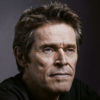Damien Chazelle’s latest movie, “La La Land,” has been nominated for 14 Academy Awards, tying it with “All About Eve” and “Titanic” for the most nominations of all time.
It’s an original musical set in modern Los Angeles, about a jazz musician who falls for an aspiring actress — both of whom have come to Hollywood to pursue their dreams.
Damien’s previous movie was the Oscar-winning “Whiplash,” about a jazz drummer. Jazz? Musicals? Not the art forms you expect a 32-year old to be into. When Brendan met Damien, he asked him why he wanted to tackle this genre of film.

Damien Chazelle: Well, I think I’m kind of interested in anything that seems on the precipice of extinction [laughs]. You know, whether it’s the musical being called dead every five years or so, movies being called dead. Every week I feel like you read another op-ed or something about the death of movies.
Of course that’s been the case for 50 years. I don’t necessarily buy into those things and I think the same goes for jazz. I mean obviously, in this movie, Ryan Gosling’s character has a kind of doomsday kind of view of jazz because he is so obsessed with, not really jazz as a whole, but really a very specific subset of jazz. A certain type of very classical or very traditional jazz that flourished in the ’30s, ’40s, ’50s, and, yeah, maybe is, as he says, dying today.

So I share, I guess, that fascination with things that are either lost or seem like we’re in the process of losing them. But at the same time I think it’s also important, and what I tried to do with movie, I guess, is to [show] it’s important to embrace modernity as well and to not be rooted completely in the past.
Brendan Francis Newnam: You’ve talked in interviews about how you were trying to strike that balance with the musical form itself. Keeping some of the romance and fantasy of musicals of yore, but also trying to incorporate a sort of naturalness. Can you talk about that?
Damien Chazelle: Yeah, I mean, I wanted to set a musical in real life, make a musical about everyday people and about a modern city that’s recognizable. That is the true modern city of Los Angeles.
So not shoot the numbers on back lots or sound stages, but really embrace the city itself as a backdrop. So it was about trying to thread fantasy into reality, not just in the musical numbers but kind of in every aspect of the movie, just try to have the movie hover somewhere between reality and a dreamscape….
Brendan Francis Newnam: You left oil stains on the street even though maybe a production designer would have wanted to scrub them and that sort of thing?

Damien Chazelle: Yeah, I mean there always needed to be, I think, a little tension between kind of gritty L.A. reality and this kind of heightened world that you just necessarily get from doing a full blown song and dance musical.
And, I think what really interested me, once you kind of set up that kind of dynamic, [is] what does that mean for the characters? What does that mean for the emotions? ‘Cause these are characters who are sort of living in their heads, they’re kind of living out their fantasies in some way.
In other ways, their fantasies remain completely out of reach for most of the movie. And so it’s that sort of tension, that frustration, that kind of perpetual state of dreaming where you’re kind of frustratingly unable to make the dreams a permanent reality. It felt like the musical was a great vehicle for getting at that kind of feeling that felt very, in some ways, unique to Los Angeles, I think.
Brendan Francis Newnam: This movie took years for you to make. You started it six years ago. You had to do a lot of convincing to get it made and it wasn’t until the success of “Whiplash” that it really got humming. When you’re finally assembling the film, did it match the vision you originally had so many years ago?
Damien Chazelle: I mean, the broad strokes, yeah. The freeway number, at least conceptually, was there in the first draft of the script. All the big set pieces were there, more or less, as you see them on the screen. Some stuff down to the tiniest details.
But there was a lot of in between changes, I think that happened over the course of the, I guess, six or seven years between first writing and when I was finally in the editing bay.
Brendan Francis Newnam: So what was one of the details that made it into the final project?
Damien Chazelle: One detail that was there in the very first draft of the script — I remember writing it — was this big piece of decoration in Emma Stone’s character’s bedroom. That there’s this kind of bigger-than-life size poster of Ingrid Bergman’s face kind of hanging right over her bed. And just the way that shot would play out of her tumbling into the bed with that poster above, I think that was there pretty much from the beginning.
Brendan Francis Newnam: Did you put that there specific ’cause you’re a Bergman fan or was that movie kind of-
Damien Chazelle: Yeah, and it felt like, again, right from the beginning, it felt like she would be a good role model, like a good model for Emma stone’s character for a number of reasons. That kind of hailing from an era when complex, juicy roles for actresses were more common and considered more commercial than they are today.
And also just as an actress as specifically, in the case with Ingrid Bergman, someone who came from outside L.A., who’s very much an outsider to L.A., and outsider to Hollywood, and never entirely actually fit in in Hollywood and kind of had her moment of stardom in Hollywood, but then wound up kind of leaving.

It just seemed like it kind of spoke to the sort of wanderer and traveler and kind of a bigger world kind of person that Mia, in the movie, would be. As opposed to Sebastian, Ryan’s character, who I always saw as much more of a kind of stick in the mud, in both the bad and the good sense of the term.
Brendan Francis Newnam: This movie is critically acclaimed. It’s done extremely well at the box office. Besides just being a beautiful work of art, do you have any theories on what’s maybe happening culturally that accounts for its success? Why do you think right now people are hungry for this and just so happy to receive it?
Damien Chazelle: I’m not sure because I didn’t really foresee this kind of success. I think all of us making the movie, we felt like the victory was just the first day of shooting. The fact that the plug hadn’t been pulled yet and that we were actually being allowed to make it. I guess my hope is maybe it’s that kind of naive passion that maybe came across in the film, I hope. I can’t really know for sure myself, but that maybe came across in the film in a way that’s connecting to people.
Certainly we’re at a time where, I think, the idea of pursuing a dream or holding onto a dream no matter how unrealistic it seems, no matter how unhopeful the world around us might seem, maybe that idea has even added resonance now, unfortunately. So I kind of, so that might be part of it too.
I also think people have always underestimated musicals. You know, again, I think that all this talk that I’ve become very familiar with about how musicals don’t appeal to most people and how the musical as a genre is dead, etcetera, etcetera, I think, actually kind of underestimate the emotional potential of the musical.
Musicals really are in a very emotional and very emotionally truthful genre because they speak to how we express our emotions. Whether we’re musicians or not, we all use music to kind of funnel our emotions. And so, I think there’s something very primal about musicals that sometimes can take people by surprise.


